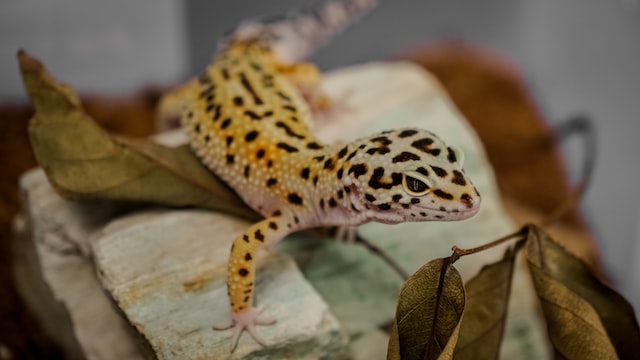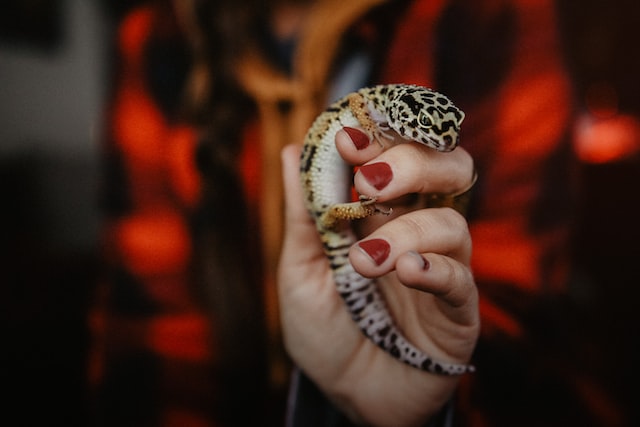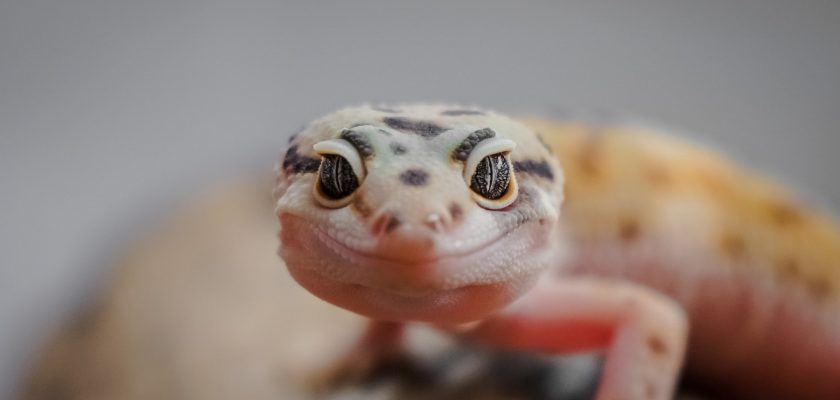If you have a leopard gecko, it’s natural to wonder how you can tell if it’s a male or female. There are a number of different signs to look out for. One of the most common is the presence of a hemipenal bulge, which is located on the back of the femoral ridge. However, there are other more subtle signs.
Male or female?
When purchasing a leopard gecko, there are a few important things to consider. First of all, you’ll want to know whether the gecko you are considering is male or female.
Male leopard geckos tend to be more aggressive than females. They are also more interactive. This is because they respond to other males with pheromones. Keeping these pheromones in mind can help you to determine the best mate for your leopard gecko.
Female leopard geckos are more cautious during the breeding season. They may spend longer periods of time hiding and stressing out. Some breeders have the belief that this type of behavior can be passed down through generations.
One of the first signs you’ll notice is that the female’s vents are set further away from the end of her tail. Similarly, her preanal pores are small and do not display a V-shaped line.

Photo by verdian chua on Unsplash
Another sign is the presence of bulges. The underside of a leopard gecko’s tail has hemipenile bulges. Often these bulges are difficult to spot, but they can indicate that your gecko is a male.
In addition, you should also be careful to check the condition of your leopard gecko’s enclosure. Humidity and temperature can play a role in egg-laying.
Also, don’t forget to look at the feces. The color of the feces can be a good indicator of how healthy your leopard gecko is. If the feces are black, then you might have a problem.
It’s also worth checking the weight of your leo. You can do this by holding the leopard gecko between your thumb and index finger. Depending on your leo’s age, you might want to retire him or her.
Hemipenal bulges
If you have recently acquired a leopard gecko, it is important to check whether the animal is male or female. To do this, you will need to look at the hemipenal bulges. These bulges are the male sexual organs of leopard geckos.
Male leopard geckos have hemipenes, two penises that are located inside the sides of their tail. These organs only function during mating. When a male is ready to mate, he will pop out his hemipenes. Until he is ready to mate, his hemipenes are concealed in bulges.
The hemipenal bulge is a reliable method for determining if a leopard gecko is male or female. However, it is not the only way. Femoral pores are also used to determine sex.
Both male and female leopard geckos have femoral pores, but the male’s femoral pores are larger. They are located on the underside of their hind legs. A leopard gecko’s femoral pores are small lines of dots that appear in vertical or horizontal rows.
Besides femoral pores, leopard geckos also have pre-anal pores. This is the gland that secretes an oily substance to attract potential mates. Unlike femoral pores, pre-anal pores are easier to notice.
Female leopard geckos also have femoral pores, but they are smaller and do not form bulges. Their femoral pores are dark and appear as a row of small dots in a horizontal line.
Although the hemipenal bulges are the most obvious way to tell if a leopard gecko is a male or a female, it is not the only way. If you are still unsure, you can look at the cloaca, which is where the fecal matter exits.
Femoral pores
The femoral pores of a leopard gecko are important to determine the gender of your gecko. When a leopard gecko grows, its femoral pores expand and become more noticeable. They look like small white dots that form a straight line on each thigh.
These pores have a similar function to the preanal pores. They help leopard geckos scent their territory. In male geckos, the femoral pores are larger and have two hemipenal bulges on their tails.
However, unlike the preanal pores, femoral pores are usually clogged in males. Therefore, it may be difficult to tell the gender of your leopard gecko using femoral pores.
If you have a female gecko, it will have no hemipenal bulges and no femoral pores. The femoral pores, however, are usually larger than the preanal pores and can be difficult to tell the difference.
A male leopard gecko is larger than a female and has a larger head. It also has larger cloacal spurs and femoral pores.
Geckos are normally sexually mature between 18 to 24 months. When a leopard gecko is six to eight months old, it should show some physical manifestations of its gender. But until it is ten months old, you should not touch or handle the gecko.
When handling a leopard gecko, it is best to gently hold it. You should not force the gecko to drop its tail.
To check for femoral pores, soak the male gecko in warm water for at least ten minutes. This will soften the waxy substance. Once the wax has softened, it will be easier to remove.

Photo by Macey Bundt on Unsplash
If you cannot tell the gender of a leopard gecko with the femoral pores, you can use the hemipenal bulges to confirm the sex. Both the femoral and hemipenal glands secrete pheromones to attract mates.
Cloacal spurs
The cloacal spurs on the tail of a leopard gecko are a good way to tell the gender. They are also used by crested geckos. But they can confuse observers.
In general, male leopard geckos are larger than females. They have a larger head and larger cloacal spurs.
Females have smaller femoral pores. They do not have hemipenal bulges. Their preanal pores are a bit larger. If they do have hemipenes, they are tucked away inside the vents.
When a leopard gecko is mated, the hemipenes will pop out on either side of the vent. This is because the hemipenes are actually the male reproductive organs. During breeding, they will be concealed under the bulge until a mate is found.
Another way to determine the gender of a leopard gecko is by watching their behavior. Both male and female leopard geckos will fight with each other. They will also drop their tails if they feel threatened. During mating season, the base of their tails will become swollen.
A common misconception is that crested geckos have spurs. These are really just two white pointy things attached to the bulge beneath the vent. They are not as large or as prominent as they are for a female.
Femoral pores are a bit smaller, but are clearly visible in a male. The femoral pores are on the hind legs and appear as a row of small dots.
Geckos are generally sexually mature between 18 and 24 months. But individual geckos develop at different speeds. So while this may be the only way to determine whether or not a leopard gecko is male or female, it is not a guarantee.
Incubation temperature
If you’re a leopard gecko owner, then you’re probably curious how to tell the gender of your gecko. It is helpful to know this information, because it affects the way you care for your pet, as well as its size and growth rate. There are a few simple ways to tell if your gecko is male or female.
First, you need to know that the incubation temperature is important. This determines the percentage of male and female in your leopard gecko. As you might expect, the higher the incubation temperature, the more likely your leopard gecko will be a male. The lower the incubation temperature, the more likely it will be a female.
Another way to tell the gender of your leopard gecko is by looking at its hemipenes. Hemipenes are two penises that are located inside the sides of the tail. They come out on either side of the vent during breeding.
These aren’t as prominent in females, and don’t have the same waxy substance that they do in males. But they are still a good indicator of the gender of your leopard gecko.
Male leopard geckos have a v-shaped row of pre-anal pores that run across the front of the vent. These pores are used by the gecko to scent territory.
Females, on the other hand, have small, clear pre-anal pores. Their femoral pores are also smaller, but they are fainter than their male counterparts.
Although there are several factors that influence the gender of your leopard gecko, the incubation temperature is the most significant. Incubation temperatures above 90 degrees can lead to “hot males” and below 80 degrees can result in “hot females.”
However, temperature fluctuations can cause deformities and can even kill embryos. So, it is advisable to use a temperature-controlled incubator, such as a styrofoam cooler with heat tape.
